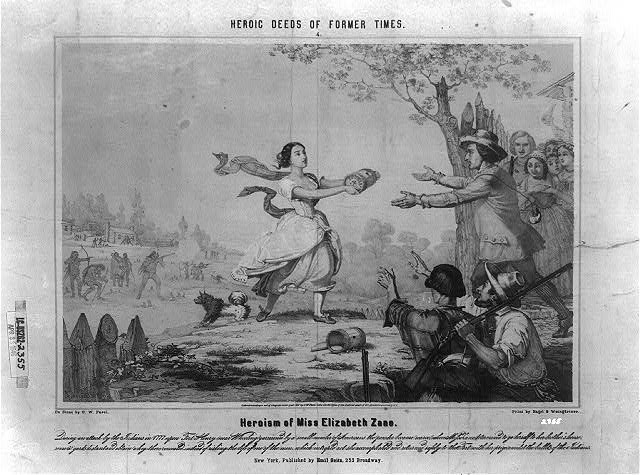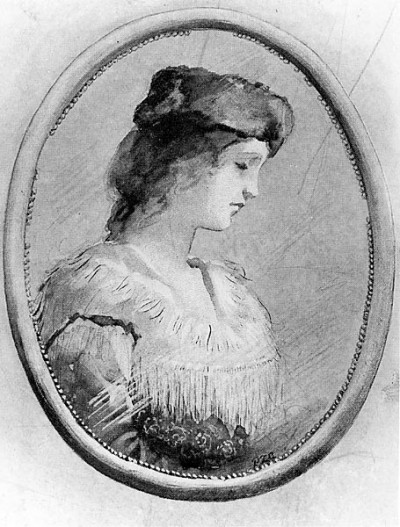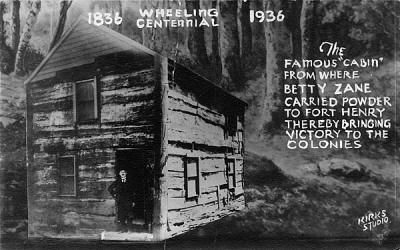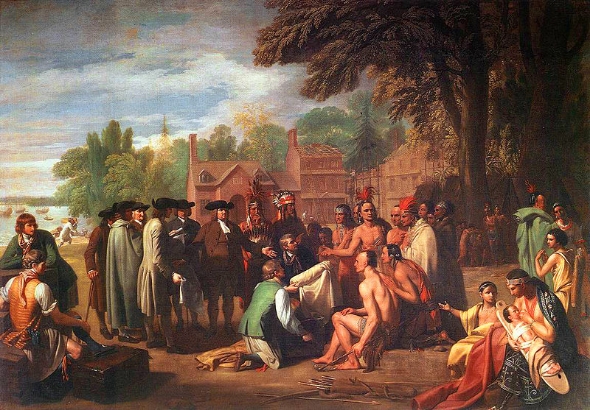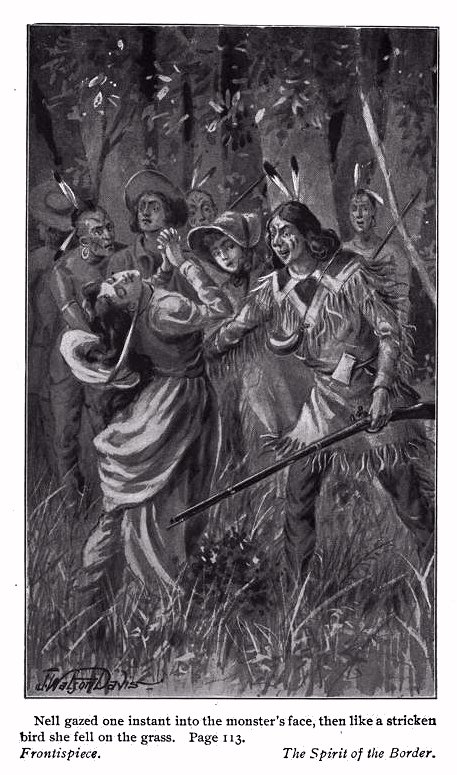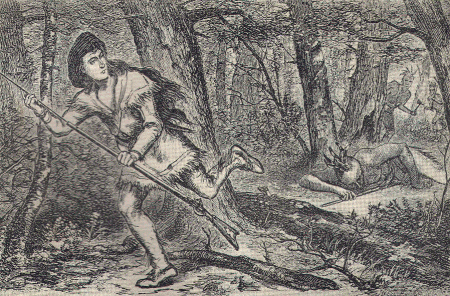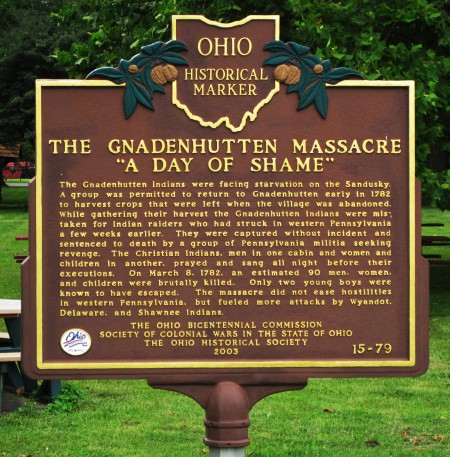Charles Francis Press, New York, 1903
Parents’ Magazine Press, 1947
In this busy progressive age there are no heroes of the kind so dear to all lovers of chivalry and romance. There are heroes, perhaps, but they are the patient sad-faced kind, of whom few take cognizance as they hurry onward. But cannot we all remember some one who suffered greatly, who accomplished great deeds, who died on the battlefield–some one around whose name lingers a halo of glory? Few of us are so unfortunate that we cannot look backward on kith or kin and thrill with love and reverence as we dream of an act of heroism or martyrdom which rings down the annals of time like the melody of the huntsman’s horn, as it peals out on a frosty October morn purer and sweeter with each succeeding note.
The 1700’s was was a time when American Indians were becoming increasingly hostile. No wonder. The invaders were moving farther and farther west and were basically squatting on American Indian land. I can’t say I would be too happy about that myself.
These reckless bordermen knew not the meaning of fear; to all, daring adventure was welcome, and the screech of a redskin and the ping of a bullet were familiar sounds; to the Wetzels, McCollochs and Jonathan Zane the hunting of Indians was the most thrilling passion of their lives; indeed, the Wetzels, particularly, knew no other occupation. They had attained a wonderful skill with the rifle; long practice had rendered their senses as acute as those of the fox. Skilled in every variety of woodcraft, with lynx eyes ever on the alert for detecting a trail, or the curling smoke of some camp fire, or the minutest sign of an enemy, these men stole onward through the forest with the cautious but dogged and persistent determination that was characteristic of the settler.
They at length climbed the commanding bluff overlooking the majestic river, and as they gazed out on the undulating and uninterrupted area of green, their hearts beat high with hope.
The keen axe, wielded by strong arms, soon opened the clearing and reared stout log cabins on the river bluff. Then Ebenezer Zane and his followers moved their families and soon the settlement began to grow and flourish. As the little village commenced to prosper the redmen became troublesome. Settlers were shot while plowing the fields or gathering the harvests. Bands of hostile Indians prowled around and made it dangerous for anyone to leave the clearing. Frequently the first person to appear in the early morning would be shot at by an Indian concealed in the woods.
General George Rodgers Clark, commandant of the Western Military Department, arrived at the village in 1774. As an attack from the savages was apprehended during the year the settlers determined to erect a fort as a defense for the infant settlement. It was planned by General Clark and built by the people themselves. At first they called it Fort Fincastle, in honor of Lord Dunmore, who, at the time of its erection, was Governor of the Colony of Virginia. In 1776 its name was changed to Fort Henry, in honor of Patrick Henry. (From prologue)
As we see from Zane Grey’s prologue the men who set out to settle new land did not care what it took to acquire that land.
Back then a common term for the American Indian was savage. I imagine a term like that made it easier for the people coming to conquer lands to justify their deeds. Like the many stories of people coming from other places and taking land from the natives, this era in the history of the US nation is something one needs to regret. While both sides of the battle for land were guilty of atrocities, there is no doubt which side bears the greater blame. That does not exclude individuals from being able to perform heroic deeds to save their own group from destruction. Elizabeth Zane was such a person.
Elizabeth “Betty” Zane McLaughlin Clark (July 19, 1765 – August 23, 1823) was a heroine of the Revolutionary War on the American frontier. She was the daughter of William Andrew Zane and Nancy Ann (née Nolan) Zane, and the sister of Ebenezer Zane, Silas Zane, Jonathan Zane, Isaac Zane and Andrew Zane. (Wikipedia)
The main attraction of the story about Betty Zane’s deed for me is the fact that we finally get to hear about a woman being the great example to follow. Zane Grey’s stories are filled with women who are strong. But he cannot help himself when he lets patriarchy shine through his depiction of his ancestor and the other women of his stories.
But what can women do in times of war? They help, they cheer, they inspire, and if their cause is lost they must accept death or worse. Few women have the courage for self-destruction. “To the victor belong the spoils,” and women have ever been the spoils of war.
No wonder Silas Zane and his men weakened in that moment. With only a few charges for their rifles and none for the cannon how could they hope to hold out against the savages? Alone they could have drawn their tomahawks and have made a dash through the lines of Indians, but with the women and the children that was impossible.
“Wetzel, what can we do? For God’s sake, advise us!” said Silas hoarsely. “We cannot hold the Fort without powder. We cannot leave the women here. We had better tomahawk every woman in the block-house than let her fall into the hands of Girty.”
“Send someone fer powder,” answered Wetzel.
“Do you think it possible,” said Silas quickly, a ray of hope lighting up his haggard features. “There’s plenty of powder in Eb’s cabin. Whom shall we send? Who will volunteer?”
Three men stepped forward, and others made a movement.
“They’d plug a man full of lead afore he’d get ten foot from the gate,” said Wetzel. “I’d go myself, but it wouldn’t do no good. Send a boy, and one as can run like a streak.”
“There are no lads big enough to carry a keg of powder. Harry Bennett might go,” said Silas. “How is he, Bessie?”
“He is dead,” answered Mrs. Zane.
Wetzel made a motion with his hands and turned away. A short, intense silence followed this indication of hopelessness from him. The women understood, for some of them covered their faces, while others sobbed.
“I will go.” (Chapter XIV)
And so Elizabeth gets the chance to shine, to show the world that women are more than they are allowed to be in a society where women are thought to the be the nurturers not the protectors. She shows that if there are people in war who have courage it is the women who are expected to support but not chance their own lives. Not matter what my views are on the conflict between the various sides of the American Revolution and the Anglos against the Native Americans, Elizabeth Zane is to me a person whose courage shines as the sun.
———————————————————
Available at Lambertville Library (with illustrations by Louis F. Grant)
———————————————————
Reviews:
———————————————————
Translations:
- Bosnian: Posljednji graničar; Kapić, Dika; Sarajevo, Oslobođenje, 1990.
- Croatian: Betty Zane (Posljednji graničar); Lakomica, Omer; Rijeka, Otokar Keršovani, 1960.
- Czech: Betty Zane; Vorel, Josef, Brno, Návrat, 1927.
- Dutch: Betty Zane (Een kind van het Westen); Roldanus, Jr., W J A; Utrecht, A.W. Bruna & Zoon’s. Uitgevers-Maatschappij, 1925.
- Estonian: Betty Zane; Tallinn, Olion, 1996.
- Finnish: Betty Zane (seikkailukertomus Pohjois-Amerikasta intiaanisotien ajoilta); Nyman, O. E.; Helsinki, Kirja, 1925.
- German: Betty Zane (Heldenmädchen von Fort Henry); Werner, Baudisch, Paul; Berlin, Th. Knaur Nachf., 1928.
- Hungarian: Betty Zane: regény (A vadon leánya); Zigány, Árpád; Budapest, Palladis Rt. Kiadasa, 192-.
- Italian: Betty Zane; Pitta, Alfredo; Milano, Sonzogno, 1932.
- Norwegian: Betty Zane; Thue, Hans Fr.; Oslo, Fredhøi, 1920. (Gratis tilgang Nasjonalbiblioteket for norske IPer)
- Serbian: Betty Zane; Kumanac, Vlado; Zagreb, HRT Naklada, 1944.
- Slovakian: Neodovzdaný list; Dzurillová, Elena & Schnitzer, Teodor; Bratislava, Mladé letá, 1985.
- Spanish: La heroína de Fort Henry: Betty Zane; Gols, Joan; Barcelona, Juventud, 1929.
- Catalan Spanish: Betty Zane; Jané, Jordi; Barcelona, Joventut, 1989
———————————————————
